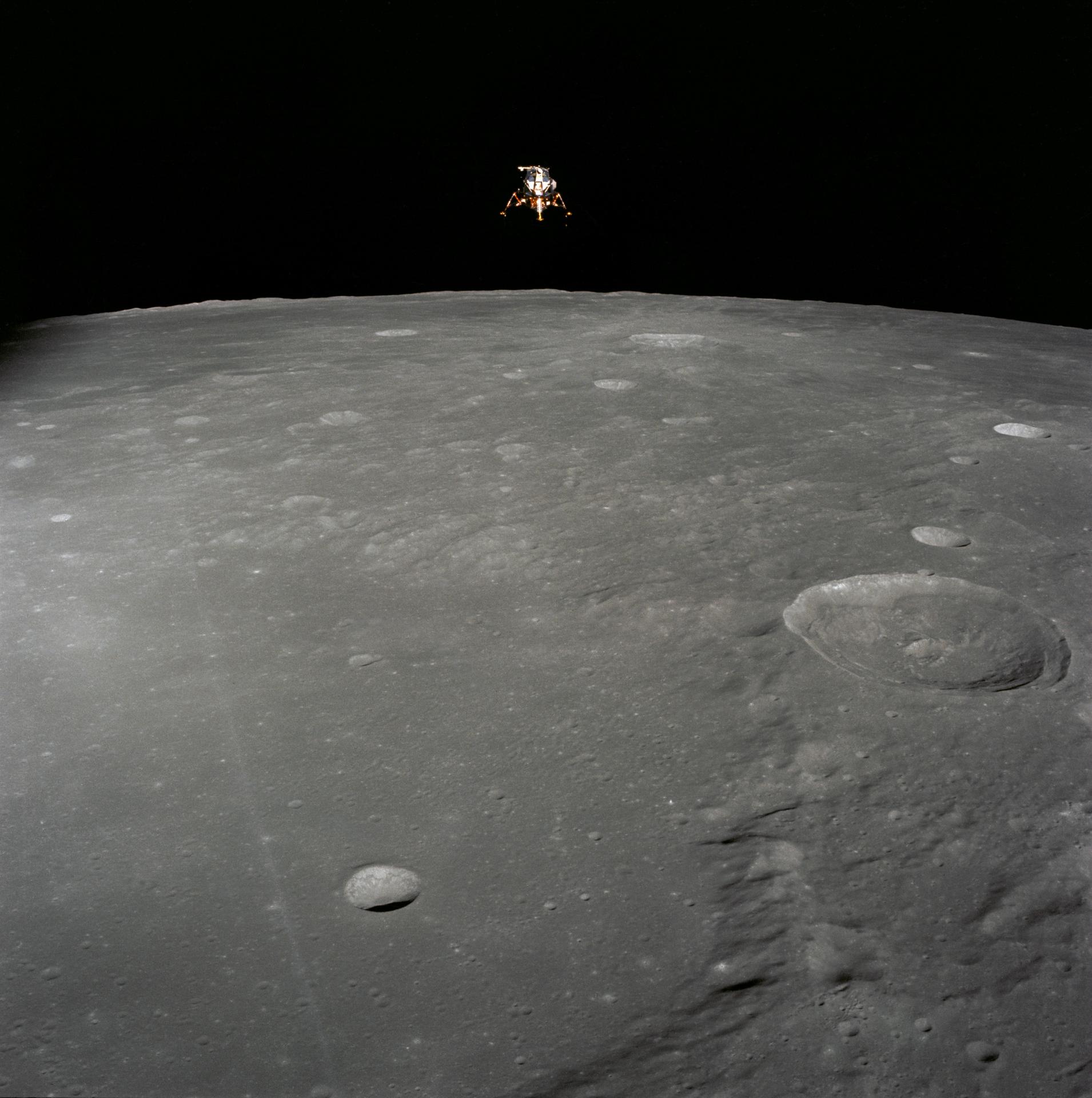Private Moon Landers Could Help NASA's Next Giant Leap in Lunar Exploration

The first commercial U.S. landers to touch down on the moon should do so by the end of 2021, and they have a long list of scientific questions to tackle when they do.
That's the takeaway from two reports released today (Feb. 7) by the National Academies of Sciences, Engineering and Medicine. The reports address the status of lunar science after President Donald Trump's Space Policy Directive 1 (SPD 1), which put NASA focus on returning to the moon — first sending robots, then humans — with the help of commercial partnerships.
NASA Administrator Jim Bridenstine announced nine U.S. companies that will compete for the first contracts to place NASA payloads on the moon, but details have been scarce about what precisely such landers could bring with them and what those payloads would do. One of the new papers, which deals exclusively with how the commercial program can contribute to lunar science, helps fill in those details, based in part on information provided by companies that have expressed interest in the program. [NASA's Exploration Mission 1: A Step-by-Step Return to the Moon in Pictures]
Those discussions suggest that the first wave of commercial lunar landers could carry payloads of between 22 and 220 lbs. (10 to 100 kilograms). The payloads would likely remain where they landed (except perhaps for some small hoppers that could move around) and would be unable to survive the harsh lunar night, which lasts two weeks in Earth time.
But such payloads could still do valuable science, the panel behind the new report argued. The science community has agreed on nine top-priority topics they want to better understand about the moon, from its formation to how it has been hit by meteoroids over the millennia to what resources humans may be able to tap into if they visit. And those topics are profiting from NASA's pivot in response to SPD 1, the first paper concluded.
The first step in response to SPD 1 may well be science cubesats that could fly to the moon on NASA's own Exploration Mission-1, the first flight of the massive Space Launch System rocket. One such instrument is already due to map hydrogen across the moon's surface.
Even the first generation of commercially ferried instruments could make important contributions to those questions, the second paper concluded. For example, the first commercial landers could place retroreflectors, which are basically sophisticated mirrors, that scientists could use to more precisely measure how Earth and the moon interact. Other early payloads could also take snapshots of lunar environmental factors, like the solar wind, radiation and dust.
Get the Space.com Newsletter
Breaking space news, the latest updates on rocket launches, skywatching events and more!
Once those landers can survive through the frigid lunar nights or deploy rovers able to explore the surface, they will open up still more scientific potential. Rovers, even short-lived ones, could explore lava tubes, which people in favor of human exploration of the moon hope could protect astronauts from harmful radiation. And once longer missions become possible, payloads can mimic the work NASA's InSight lander's seismometer does on Mars, monitoring lunar meteorite impacts.
But the new papers also raise some concerns that NASA's lunar program — in conjunction with commercial partners and on its own — will need to address. In particular, the experts said they worried that without careful communication between NASA and commercial providers, there could be mismatches between the landers and instruments. Any such miscommunications could cause schedule and budget overruns. [Building Apollo: Photos from Moonshot History]
And the committee was clear to emphasize that while all of these initiatives will be valuable for lunar science, the moon-focused SPD 1 has yet to push forward a crucial class of missions. For 15 years now, scientists have endorsed two specific mission concepts for lunar science, each of which would cost up to $850 million.
One of those missions would bring a sample back from the South Pole-Aitken Basin region, the same area of the moon where China's Chang'e 4 mission is currently exploring; the other mission would place a network of landers on the moon to help researchers understand the lunar interior. Neither mission is currently on NASA's docket, and the smaller commercial missions discussed so far would not provide the same scientific returns, the reports noted.
Scientists interested in participating in the commercial lunar program are currently preparing proposals for scientific instruments to fly on the commercial landers. The proposals were originally due last month, but the deadline was extended to Feb. 27 after the federal government's 35-day partial shutdown.
Email Meghan Bartels at mbartels@space.com or follow her @meghanbartels. Follow us @Spacedotcom and Facebook. Original article on Space.com.
Join our Space Forums to keep talking space on the latest missions, night sky and more! And if you have a news tip, correction or comment, let us know at: community@space.com.

Meghan is a senior writer at Space.com and has more than five years' experience as a science journalist based in New York City. She joined Space.com in July 2018, with previous writing published in outlets including Newsweek and Audubon. Meghan earned an MA in science journalism from New York University and a BA in classics from Georgetown University, and in her free time she enjoys reading and visiting museums. Follow her on Twitter at @meghanbartels.









